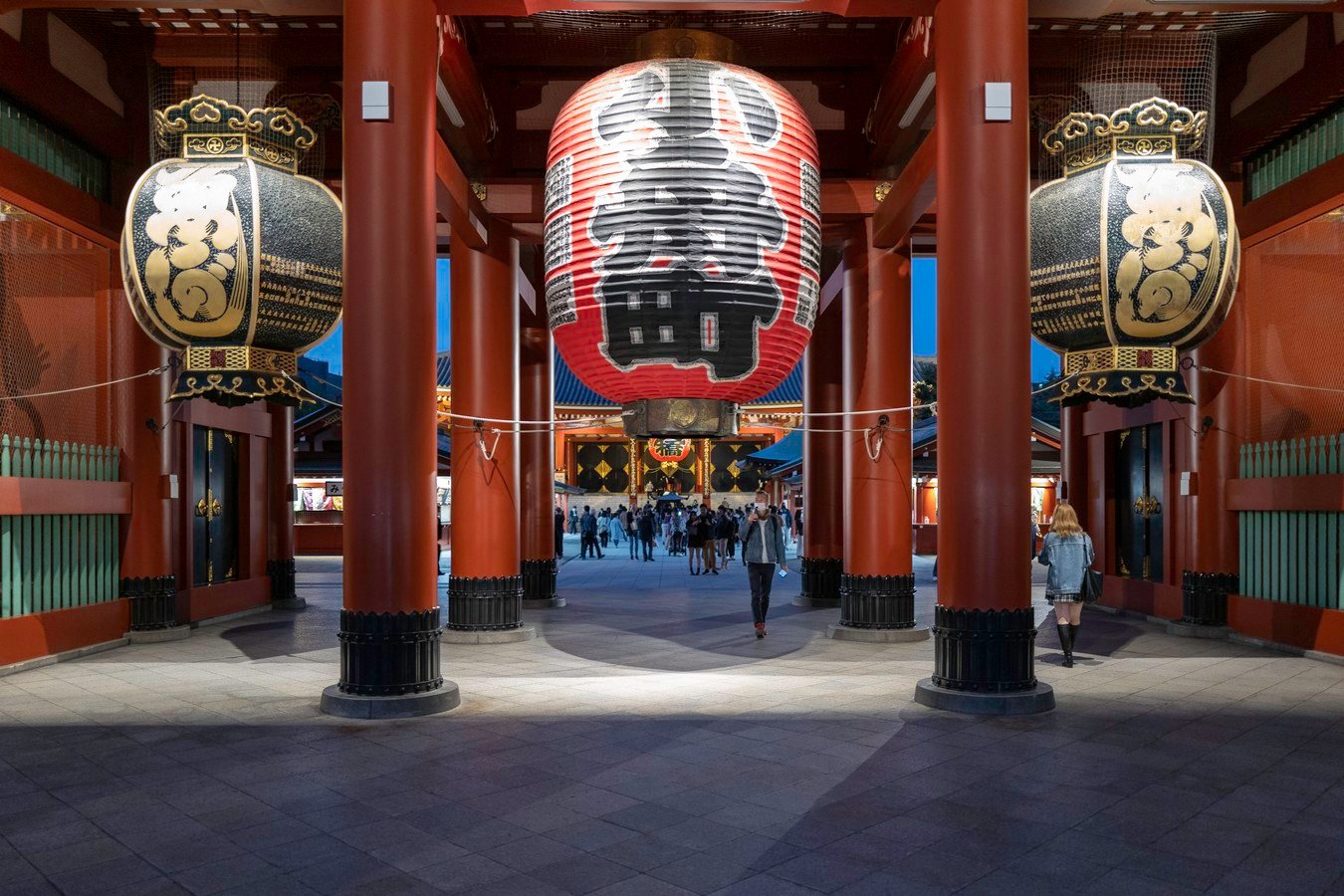Asakusa, a vibrant neighborhood in Tokyo, captivates with its enchanting blend of ancient Japanese traditions and contemporary urban life. Its cobbled streets and historic temples beckon travelers to immerse themselves in the heart of Japanese culture.
A Cultural Tapestry
Asakusa’s cultural legacy is palpable in its numerous temples and shrines. Senso-ji, Tokyo’s oldest temple, stands as a testament to the area’s deep-rooted spiritual heritage. With its towering five-story pagoda and sprawling complex, it draws throngs of worshippers and visitors alike.
Beyond Senso-ji, Asakusa is home to smaller shrines such as Hōzōmon Gate, known for its elaborate carvings, and Nitenmon Gate, which once served as the entrance to Yoshiwara, Tokyo’s former red-light district. These sacred sites provide a glimpse into Japan’s rich religious history.
A Market of Wonders
Nakamise-dori, the bustling street leading to Senso-ji, is a vibrant market where tradition thrives. Stalls adorned with colorful lanterns hawk a myriad of souvenirs, from traditional kimonos to dainty porcelain figurines. The air is thick with the scent of incense and the chatter of vendors calling out to passersby.
Food stalls offer an array of Japanese delicacies, including takoyaki (octopus balls), dango (sweet rice dumplings), and ningyo-yaki (fish-shaped cakes). The mouthwatering aromas tantalize the senses, inviting visitors to sample local culinary delights.
A Modern Marvel
Amidst the traditional architecture, Asakusa boasts a modern-day marvel: Tokyo Skytree. This towering skyscraper, the tallest in Japan, offers breathtaking panoramic views of the city from its observation decks. As darkness descends, the tower transforms into a beacon of light, illuminating the skyline with its vibrant colors.
Where Tradition Meets Innovation
Asakusa seamlessly blends tradition and modernity, creating a unique and harmonious atmosphere. Restaurants serving traditional Japanese cuisine stand alongside modern coffee shops. Antique shops nestled among boutiques offer a glimpse into the past and present of Japanese culture.
Practical Visitor Information
- Getting There: Asakusa is easily accessible by Tokyo Metro Ginza Line or Toei Asakusa Line to Asakusa Station.
- When to Visit: The best time to visit Asakusa is during daylight hours to fully experience the vibrant atmosphere of the market and surrounding area.
- What to Wear: Asakusa is a popular tourist destination, so comfortable walking shoes are recommended.
- Respectful Behavior: When visiting temples and shrines, remember to remove your shoes before entering and behave respectfully.
Cultural Elements
- Kimono: Traditional Japanese attire worn for special occasions and festivals.
- Lantern: Paper or cloth-covered lights used to illuminate paths and buildings.
- Market: A place where goods and services are traded.
- Temple: A sacred place of worship for Buddhists.
- Shrine: A sacred place of worship for Shintoists.
Embark on a journey to Asakusa, where the charm of Japan’s rich past intertwines with the vibrancy of its present. From ancient temples to bustling markets and modern landmarks, this captivating neighborhood offers an unforgettable cultural experience.



